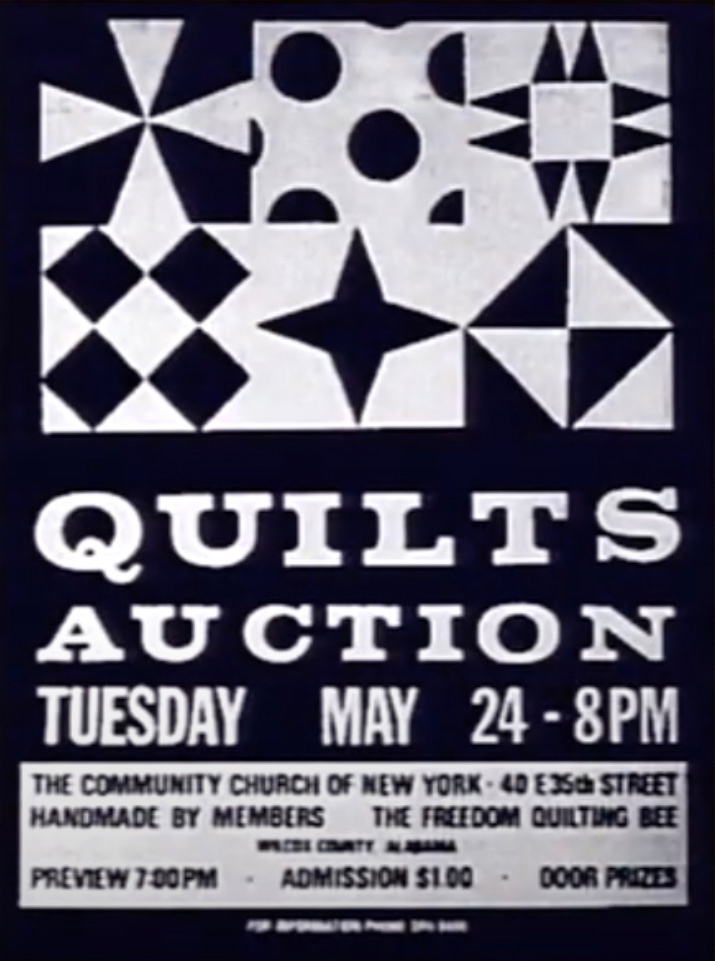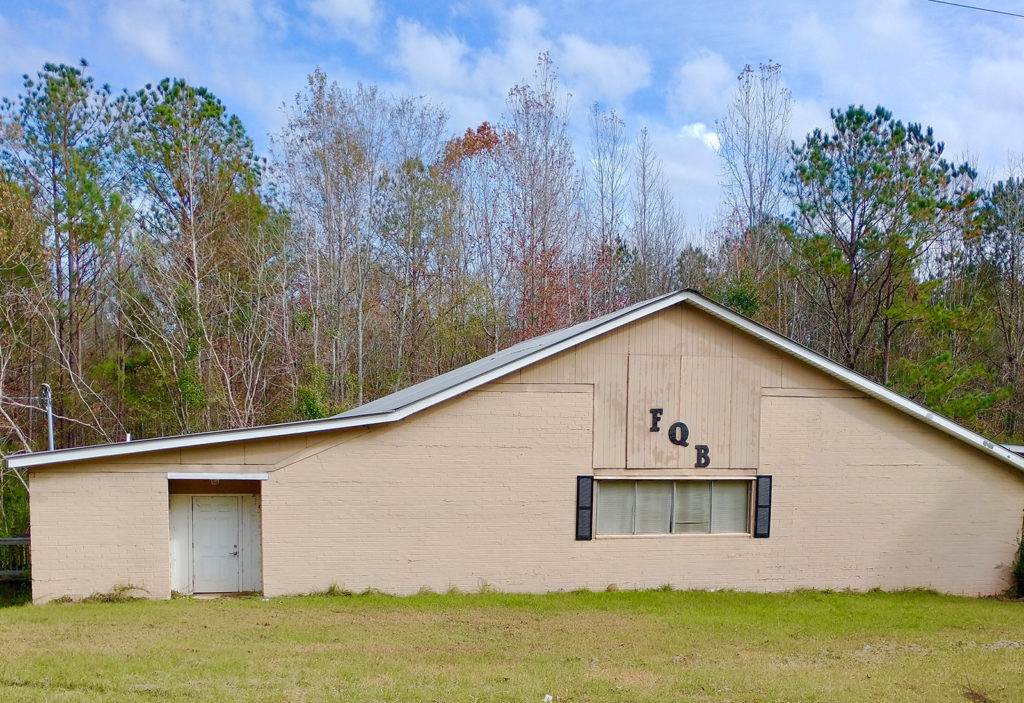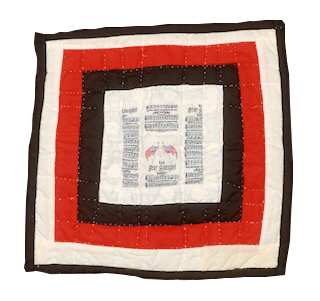Freedom Quilting Bee was born in March 1966 as an outgrowth of the civil rights movement as a beacon of hope, a battle for economic survival and a quest for dignity.
In 1966, local black people in Wilcox County, Alabama were being evicted from their homes, losing their jobs, and having their home loans foreclosed by the banks after registering to vote—or even being seen at a voting rights demonstration. An Episcopal priest and civil rights worker named Father Francis X. Walter was in the area to record the facts of these crimes and send the data to the FBI for prosecution under the newly enacted civil rights legislation.
However, as he told author Nancy Callahan in her book The Freedom Quilting Bee—Folk Art and the Civil Rights Movement in Alabama, “The FBI did nothing. The federal government prosecuted no one.”
Meanwhile, as he traveled the area, he saw the many beautiful and unique quilts local women had created hanging on clotheslines in the area. He believed there was economic potential to these functional works of art. So, with the help of Father Walter, many volunteers and the strong leadership of Estelle Witherspoon, the Bee’s first president, Freedom Quilting Bee was established.
The artistry of the women, the unique expression of the quilts, and the stray materials used to create them, caught the attention of many far beyond Alberta and Wilcox County.

“Father Walter believed the reason the co-op was started “had to do with people deciding they wanted to make money and control their own lives.”
FQB Grows Sales Exponentially with Manufacturing Contracts
Beginning in 1969, the Bee landed small contracts with New York department stores Saks Fifth Avenue and Bonwit Teller In order to provide the consistency and quality the stores needed, the quilters changed their product. Rather than full-size quilts, they began making baby quilts, useful for baby beds, wall hangings, small tablecloths and picnic blankets. The pattern chosen was the Coat of Many Colors, which had been a staple of the Wilcox quilters for a century and a half. For the black women, the design was in memory of the biblical Joseph, who had been given a coat of many colors that caused him to be cast into Egypt, where he faced many trials as difficult as their own
Monumental Quilt
In 1970, the artists of the FQB were asked to create a monumental quilt—44 feet by 20 feet—for the Festival of Folkways celebration in Texas. The quilt was hung on the outside of a popular upscale department store in Houston.
See the quilt being hung in this short video.
Sears, Roebuck Comes Calling
Looking for ways to diversify and increase production and profits, the women turned to corduroy pillow shams, and Sears liked what they saw. The Bee landed a contract with Sears in 1972.
During their busiest time, the women produced 30,000 shams every six months, 5,000 a month, and 200 a day. In 1980, the Bee did $7,500 in business, $5,100 of which was from Sears. By 1982, sales had increase to $200,000, the majority of which was sales to Sears.
Not only was FQB’s work prized by Sears and its customers, but art collectors and artists such as Diana Vreeland, Jackson Pollack and Lee Krasner acquired individual full-size quilts as works of art.
Between the Sears contract and the attention of collectors, the quilters were able to provide for their families, express their personal artistic visions and gain the pride of accomplishment.
In fact, as noted by author Callahan, “The first two years in the life of the Freedom Quilting Bee, 1966 and 1967, were amazing in terms of job orders and volunteer energies. Between its founding in March 1966, and the end of the calendar year, the co-op provided $5,500 in profits to its members, amassed mostly from the sale of $20 and $25 quilts…the co-op raised family income for some by as much as 25% “ in just its first 10 months.
Today, quilts from the artists of Freedom Quilting Bee are exhibited in museums across the globe and are highly prized by collectors, going for thousands of dollars.
Although FQB went strong for more than two decades, it didn’t survive into the 21st century, allowing the history, stories, innovation and incredible courage and accomplishments of a group of determined black women artisans to all but disappear. Our new organization, Freedom Quilting Bee Legacy, was created to right that wrong.


